Maybe it’s what we want to be in it that matters more
I was going to do one of those I-don’t-have-a-vote-but-here’s-who-I-would-vote-for articles that are all the rage these days, but I would just end up with a ballot that looks like what Joe Posnanski and Jay Jaffe ended up with (though I’m only starting to warm up to Curt Schilling and I’m not quite sold on Larry Walker). Since those guys did a better job than I ever could, there’s really no point in that exercise. Instead, let’s look at the voting itself, which is likely to be all there is to discuss once the results are in.
To have a vote on who gets a plaque in the Baseball Hall of Fame within the first 20 years following their retirement, you need to spend 10 years as a member of the BBWAA. Put in another 10 and your voting privileges won’t expire until you do. If you’ve been wondering why some of the voters seem like senile old coots, well, they are. To be included on the ballot, you need to have appeared in the majors in at least 10 different seasons and get through a rigorous nomination phase that apparently everyone except Edgardo Alfonzo gets through. Seriously, the list of “Guys on a Hall of Fame ballot who weren’t half the player Edgardo Alfonzo was” has got to be in the hundreds (Tony Womack? Are you kidding me?). Any player who receives votes on at least 75% of the submitted ballots gets a Hall of Fame plaque, any player with less than 5% is removed from consideration, and everyone in the middle has 15 years to do one or the other before getting the axe. This ensures that guys like Darryl Strawberry don’t clutter up the ballot while virtually identical players like Dave Parker remain in the discussion for 15 years. Or that we spend 12+ years wondering how Alan Trammell can be considered Hall worthy when his superior teammate Lou Whitaker never made it past his first ballot. Yes, the process that passed on Keith Hernandez and settled for Jim Rice in his final year of eligibility is completely not broken. Well, at least it isn’t the Veterans Committee.
So with such a flawless process already in place, now we get to pass judgment on the Steroids Era for the first time. Except for when Jeff Bagwell was denied because he had big muscles, and you know what they say about guys with big muscles… And all the years that Mark McGwire has received minimal support (at least he came clean, though he downplays the impact of his steroids). But now, for the first time ever, we have legitimate superstars, inner circle guys, who have been connected to performance enhancing drugs. PEDs. The greatest evil ever to stain the reputation of Major League Baseball. This time it counts.
Business as usual
So what did the writers do? Some, like the ones I most agree with, weighed each player’s performance without giving them major penalties for admitted, suspected, or wildly speculated PED use. Since knowing for certain who used and who didn’t or who benefitted and who suffered is an absolute impossibility, you can’t really do much to negate the effect of steroids when weighing a Hall of Fame case. While this is the approach I would choose, it isn’t the only one out there.
Everybody’s dirty
Other writers decided that the entire era is tainted and refused to vote for any of them. Some even refused to turn in their ballots, which means that they won’t count against anyone when the votes are tallied (the blank ballots however will add to the total ballots cast). This doesn’t seem like a good long-term solution, but it could send a message that better guidance is needed. I would argue that saying “Hey, we need better guidance!” would send a clearer message, but I’m not the one getting paid to figure these things out.
Everybody’s dirty (except for my guy)
While I can (kind of) admire taking a stand by using your ballot to vote against the system, I just don’t get the guys who turn a ballot with a single name because everyone else who was worthy was dirty. Jack Morris is usually the lone name (probably because he had a lot of votes last year) and the assumption is that, because of the years he played in, he is free from PED suspicion. Everyone else must have been on something, but my guy’s clean! Never mind that steroids have been a part of baseball at least back into the ’60s or that amphetamines have been used (illegally) as performance enhancers for longer than that (but that’s OK because the teams were giving them out like candy). Dale Murphy is another name that comes up in this category because he’s just a swell guy. The best defense of a Murphy-only ballot I’ve seen is that, if the character clause can be used to disqualify some of the best players in history, it should also be used to boost a good guy whose numbers weren’t quite there. The logic is flawless, but I’m not buying the premise. In any case, declaring that only one person on this ballot is worthy is highly questionable at best.
I am the law!
We don’t know who did what when, but that doesn’t mean we can’t pass judgment! The most frustrating ballots are the ones that combine all of the above logic to generate a standard 5 or 6 player ballot with “clean” players. This gets murky because PEDs not only inflated the stats of the users, but they also reduced the stats of the non-users. This exercise requires banishing all players with tarnished reputations and lowering the standard for the Hall. In a perfect world, I could see this working. In a world where today’s saints are tomorrow’s disgraces and Murray Chass has waged a one-man smear campaign against Mike Piazza for the better part of a decade based only on a bad case of acne, you might as well make your picks by dartboard. I understand the pressure from readers who rant about how anyone who votes for a “cheater” will burn in hell, but the writers should have learned by now to ignore their less eloquent critics. And, while I agree that Tim Raines should be in the Hall, how can anyone ever call him “clean?”
Sorry, ran out of room
The 10-player limit on the Hall of Fame Ballot gives writers an interesting out when it comes to controversial cases. While voters only list 5 or 6 names on average, a few do max it out, especially in years with this many qualified players. If you want to steer clear of the McGwire/Sosa/Palmeiro controversy or the Bagwell/Piazza witch hunt, just load up your ballot with borderline guys and then lament that you had but ten slots with which to vote. You can placate their supporters without attracting the ire of their opponents. Genius! Bonus points for using a convoluted nonsensical mathematical system for justifying that there were ten players more deserving than Piazza on this year’s ballot.
No first ballot for you!
I understand that people always want a way to distinguish the great great players from the good great players, but maybe the number of times on the ballot isn’t the way to do it. Some great players fall off the ballot in their first year of eligibility, while some get in quickly and others wait far too long. Recently, voters have been assigning special meaning to a “first ballot” Hall of Famer, using this honor as an excuse to delay entry for anyone not deemed worthy (and don’t get me started on the ones who just want to make sure nobody gets in unanimously). Just look at Roberto Alomar, who got 73.7% of the vote in his first year (meh, borderline) and 90% in his second (duh, superstar). The same logic is coming up in the PED discussion, with many voters putting off a decision until next year. Stalling isn’t a particularly effective voting strategy, especially with a loaded ballot that won’t be getting any smaller.
And inside the vault…
With the combination of these voters, there’s very little chance of anyone getting in this year. Maybe Biggio, who seems to be more “clean” than his teammate Bagwell for reasons that defy logic. Maybe Morris, whose case now seems to rest on his number of opening day starts and the number of innings he pitched, plus the fact that his career ended before everyone was doing steroids (which somehow proves that he’s clean). Piazza? Probably not, which is a shame. Trammell and Raines should be getting more support as the writers shun the more recent players, but that’s not happening. And Dale Murphy, nice guy, isn’t getting in. Sorry.
Is there any hope?
There seem to be some problems here with no clear solutions. However, this would all be a waste of space if I didn’t propose any solutions, so here goes.
1. Expand the ballot to 15 names
Most voters don’t even use up the ten they have, but that limit predates the expansion era. With more teams and more players, it stands to reason that there should be more players each year who are worthy of the Hall. The problem is only going to get worse over the next few years, so the time to act is now. It won’t fix everything, but it is a reasonable measure that should be easy to pass. At least it would look like someone is trying.
2. Have the Hall take an official position on PEDs
When writers are throwing up their hands in confusion, something needs to be done. I suppose you could just stop sending them ballots, but the more constructive solution is to put together a press release telling them exactly how to feel about PEDs. This seems to be what they’re after. One possible statement is this:
Drugs are bad, mmmkay? You shouldn’t do drugs, mmmkay? Steroids are bad, players shouldn’t do steroids, mmmkay? Doing steroids will get you suspended but doesn’t make you ineligible for the Hall of Fame, unless you get caught three times, mmmkay?
What, don’t think that will fix everything? If the Hall comes out and says “Steroids happened and we expect that there are players enshrined here who used steroids and other PEDs and that there will be more PED users enshrined in the future,” then the “NO ROIdZ IN TEH HALL EVAR!!!~!” crowd would lose some footing from their untenable position. Voters are still free to withhold their vote for anyone who ever came into contact with PEDs, but they won’t be able to hide behind the claim that they’re defending the purity of the Hall of Fame. That cherry was popped long ago.
3. Make all Hall of Fame ballots public
This one probably won’t help anything, but it’s an overdue measure in an age where every scrap of data is overanalyzed. Public ballot reveals started last year with major award voting and it made it perfectly clear who the idiots are. Now, some of the senile old coots out there are proud of their idiocy, but the writers shouldn’t be able to hide behind a veil of secrecy when they’re making decisions based on rumors, accusations, and baseless speculation. If you can’t disclose your vote and the justification behind it, you shouldn’t have a vote in the Hall of Fame.
4. Form a Steroid Era Committee and give the writers 20 years off
Can’t handle the responsibility of judging the players in an era when you kind of dropped the ball on their steroid use? Why not call in a special committee to take over and take the blame for letting in cheaters and/or the underqualified? Just like we write off most of the Hall’s lesser inhabitants because of the various flavors of Veterans Committees, a Steroid Committee could shoulder the blame for the entire era. Because we know that the ones who vote for the PED users are the real villains.
5. Have the writers start the discussion before the ballots are sent out
We’ve been through a month of hand-wringing over the steroid issue, and now it will be forgotten for another 11 months until next year’s ballots come out. Maybe we could get some more reasonable positions on these issues if people started talking about them before they fill out their ballots. In fact, the only way any of this will start to make any sense is if the writers can begin to agree on how to approach Hall of Fame voting. Obviously, every voter approaches their decision differently, but right now they’re so far apart that the entire process is a waste of time. With that in mind, let’s lay out just what we’re dealing with. After all, I’m an engineer, not a sanctimonious arbiter of good and evil.
The Saints
Nobody. Seriously, nobody. Even if someone performs miracles, PED use will be suspected.
The Suspected PED Users
Everyone who played prior to the institution of testing. That includes Bagwell and Piazza plus Morris and Murphy. Everyone. You can’t prove that someone didn’t use PEDs, so I’ll raise your wild unfounded speculation about player X with wild unfounded speculation about player Y. It seems like people only want to put home run hitters in this category, but that’s absurd. How about the guy who threw a 10-inning shutout in game 7 of the World Series and pitched 240 or more innings in 10 seasons? Sounds suspicious to me.
The Assumed PED Users
Here’s your Bonds and Clemens tier. They’ve been linked to PEDs so strongly that they’ve been taken to court. Not necessarily successfully, but we’ve declared them guilty in the court of public opinion based on something more than big muscles or acne.
The Admitted PED Users
Mark McGwire on this year’s ballot, with honorable mentions to Jose Canseco, Ken Caminiti, and future conundrums Andy Pettitte and Alex Rodriguez. At least they came clean, right? Or maybe they only admitted to what they were accused of to save face. How do we know that they’re telling the whole story?
The Exposed PED Users
These guys failed tests of some sort, so this is where Sosa, Palmeiro, and eventually Melky Cabrera and Ryan Braun will go. Maybe it was just a one-time mistake, maybe they were just good at hiding it. We know they were taking something though, at that one specific point in time. For the rest of their careers though, see above.
The Repeat Offenders
Manny Ramirez, founding member.
The Permanently Ineligible
Three strikes and you’re out. That’s MLB’s position at least, some of the writers stopped reading at the top of the list. At least we can all agree on this one.
So how do we treat these guys? Are they all the same? Are some worse than others? Do we need different standards for players in different categories? (Hint: Bonds and Clemens probably still get in even if you raise the Hall of Fame standard to the ceiling.) Should we pull a Tour de France and wipe the entirety of the Steroid Era from the history books? Who do we really want to see get a plaque on a wall in the most boring room of the Baseball Hall of Fame? Because that’s really what this comes down to. It’s not about integrity or honor or the message it sends. It’s not about the sport’s history, righting wrongs, or deciding the fate of the world. This is about who gets a plaque and who has to settle for a cardboard cutout and some memorabilia. Or whatever the heck they have for displays in there these days, it’s been almost 20 years since I’ve been there. It would be nice to see it again, but I think I’ll wait until there’s a Mike Piazza plaque on the wall. Until then, the vault is empty for me.
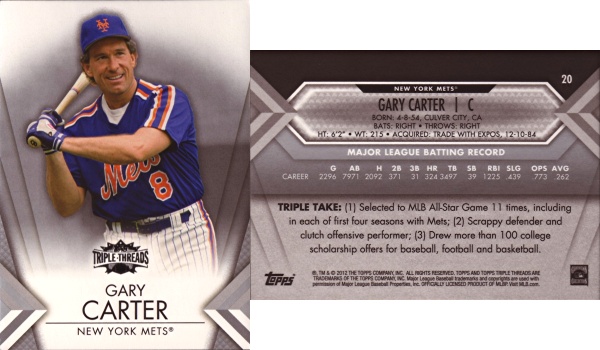
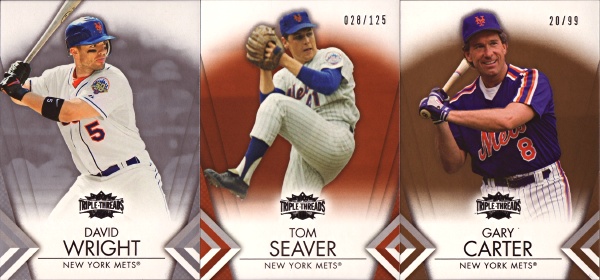

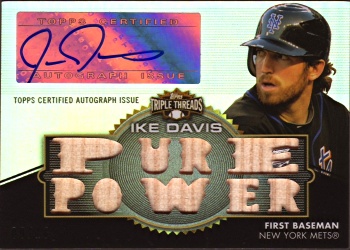
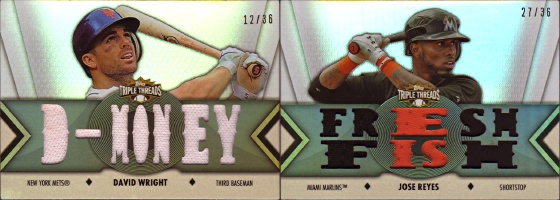

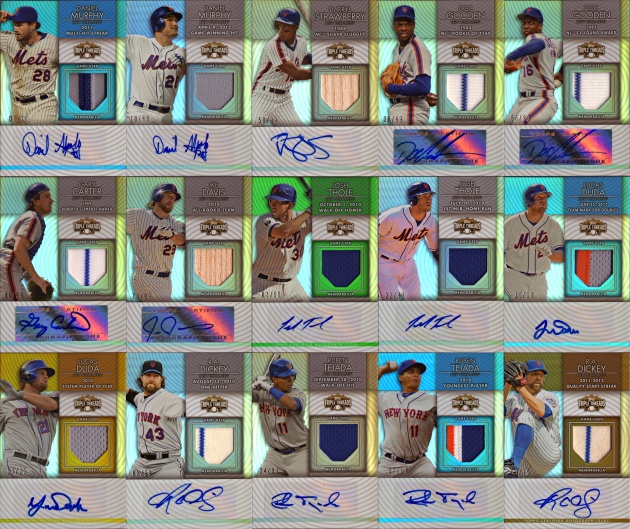
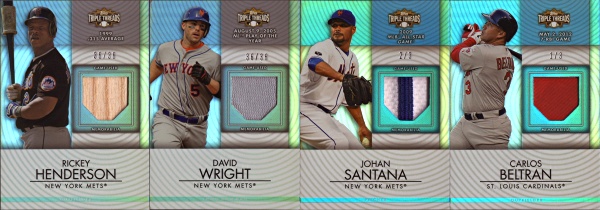
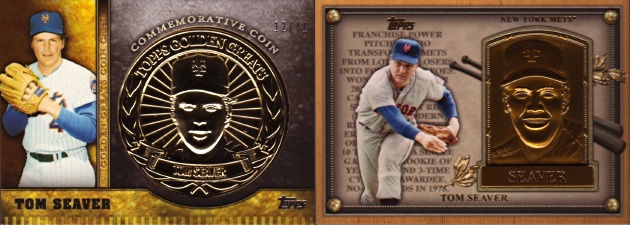
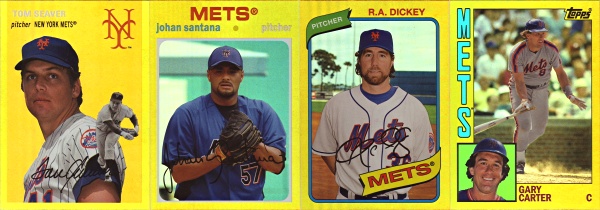
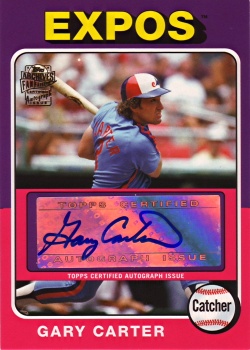
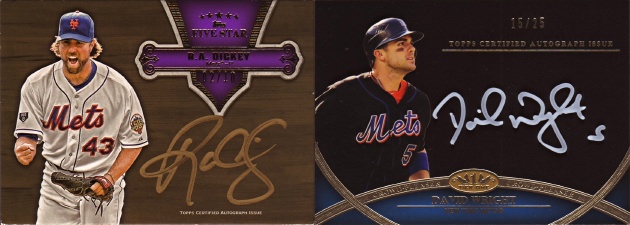
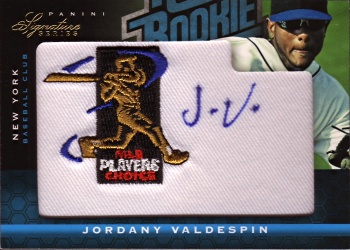
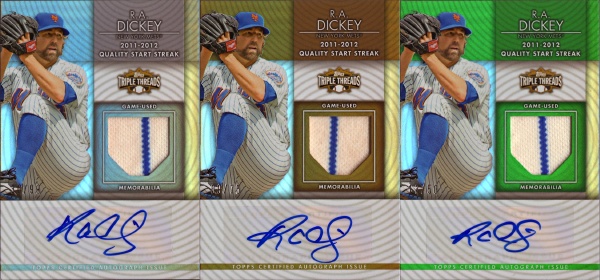
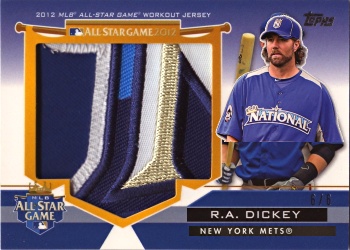
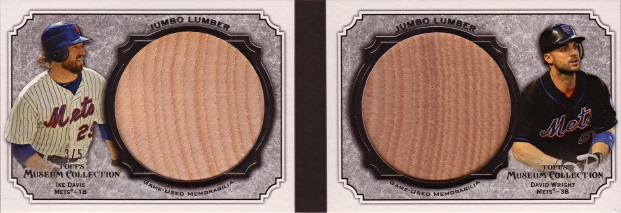
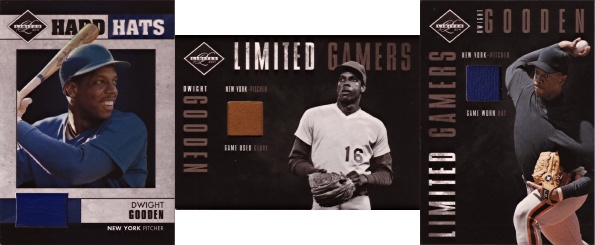
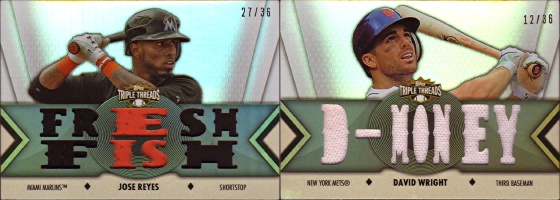
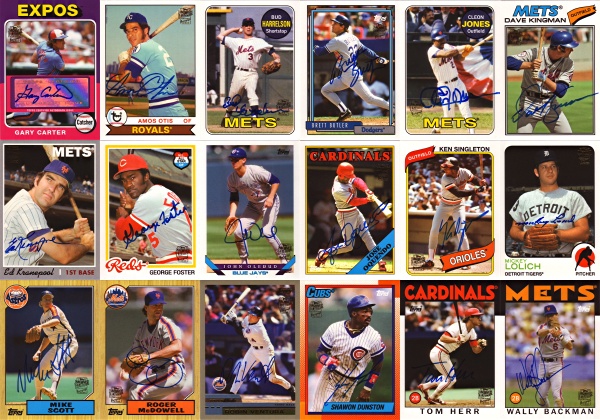
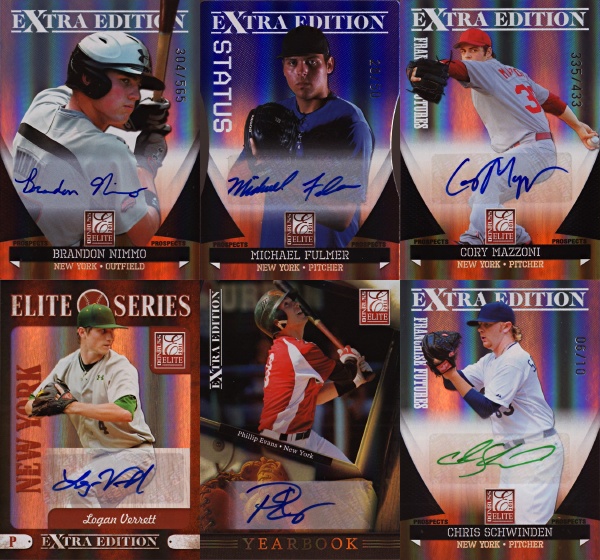
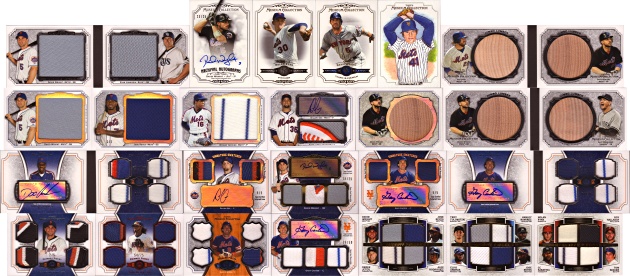
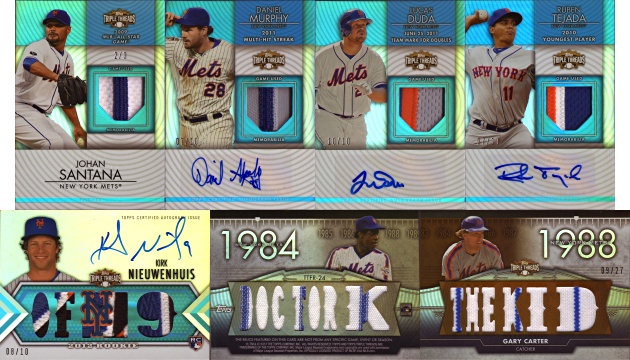
Recent Comments